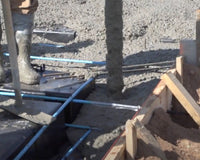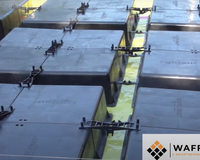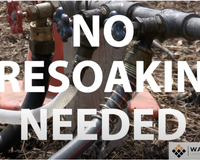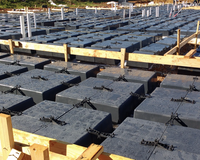Soil moisture conditioning and compaction are essential processes that prepare soil for construction. Building on expansive or cohesive soil poses many challenges pre and post-construction. It can cause delays, require expensive equipment, and complicate the design process.
Expansive soils can pose dangers on your building site, and can cause cracks in your foundation, walls, and structural features of your building. Repairing damage caused by expansive soil can be expensive and intrusive to anyone living in the home. That’s why soil moisture conditioning and compaction are critical.
Here’s what you should know about soil moisture conditioning and compaction if you’re building on bad soil. 
When do you need soil moisture conditioning?
Soil moisture conditioning refers to the process that prepares the soil for building by reducing or increasing the moisture in the soil. When moisture levels are too high or too low, it will lead to unstable soil that can damage a foundation. Too much moisture can cause swelling, problems with over-compaction, and unsuitable bearing capacity. When moisture levels are too low, it can cause sediments to shrink creating voids in the soil... but more importantly, it creates an environment prone to future swelling and expansion of the soil. The number 1 cause of foundation failures in slab-on-grade foundations is soil expansion.
You will need a soil report to understand the moisture conditions of your soil. After proctor testing, your geotechnical engineer may recommend soil conditioning processes like water injection, compaction, or the use of select fill. You will need to determine what soil conditioning method is best for your site and build requirements.
Water injection is a possible solution
During water injection, injection rods are inserted into the soil at your project’s required depths in an alternating grid-like pattern across the building site. A mixture of water and surfactant is used to pre-swell the soil and add stability.
Water injection raises soil moisture content, making it expand before construction. You will need to keep your soil wet indefinitely. If allowed to dry, it will return your soil moisture content and potential for swelling back to previous levels. Once swelling has been achieved, your soil’s level of expansion will remain relatively stable, as long as surface moisture conditions remain constant.
You may need to consider adding an irrigation system and targeting areas where your soil is more prone to drying. This will maintain the optimum moisture content of your soil after water injection.
How to compact soil for a foundation
 Compaction is another standard method of soil conditioning. The purpose of compaction is to remove the voids between soil particles. Compaction can be achieved with shear strength, vibration, and help from select fill made from cohesive soils.
Compaction is another standard method of soil conditioning. The purpose of compaction is to remove the voids between soil particles. Compaction can be achieved with shear strength, vibration, and help from select fill made from cohesive soils.
Compaction of soil in construction is used when there are problems with seepage, drainage, or the weight-bearing capacity. This process creates a stable surface that is suitable for construction and the long-term stability of your foundation.
Why is soil compaction important? The importance of soil compaction is that it protects your foundation from slab heave and differential movements caused by soil expansion. It’s an essential step in a construction project where active soils are present.
The downside to compaction is that it requires expensive compaction equipment like plate compactors or drum rollers. In many cases, you may still need to take additional measures to protect your foundation from bad soil.
Fill dirt for a foundation
Contractors using fill dirt to prepare a building site must pay attention to the type of soil, the moisture content of the soil, and how the fill dirt is being placed. Options for using fill dirt include using “native” soil, or what is called “select fill”.
Native soil is soil that matches, or is very similar, to the soil found at the building site. Engineers who prefer to use native soil usually make this choice so that all the soil at the site will exhibit the same characteristics. Select fill is a more stable type of soil and, when an engineer specifies select fill, he is usually attempting to create a stable environment where shrink/swell potential is minimized. In either case, contractors must adhere to the specific instructions from the engineer regarding placement, compaction, and moisture conditioning of the soil. The best type of dirt for your site will depend on your location, climate, and other environmental factors.
Although this can be an effective way to achieve long-term soil conditioning, it does have downsides. You may need to dig several feet below and around your foundation to prevent soil movement. This can be very expensive and cause delays in your project.
Wafflemat solution

The Wafflemat System is an above-ground foundation designed to withstand the differential movements of soils. With Wafflemat, you can protect your foundation on bad soil — with little or no pre-soaking or compaction required.
Wafflemat is a permanent foundation solution for expansive clay soils that otherwise need to be moisture conditioned and maintained indefinitely. This makes it an effective alternative to help you meet soil conditioning requirements. Use it to ensure the long-term integrity of your structure and help you save thousands of gallons of water during construction.
Learn more about the Wafflemat system and how it can save big on soil moisture conditioning and compaction.





